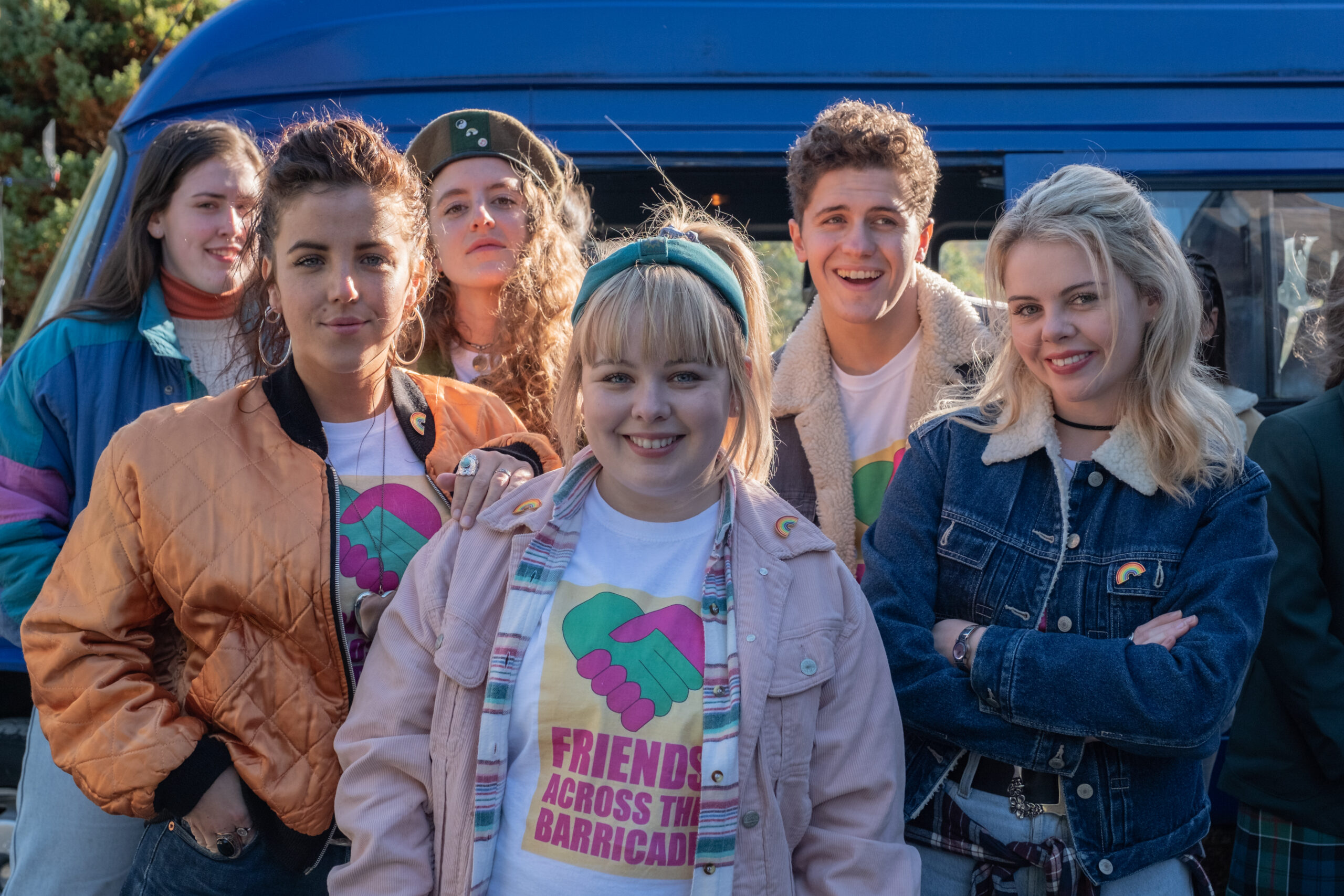Conversations about people who’ve lived through war are often one-dimensional pictures of trauma. But survivors are always much more than that. Thankfully, Derry Girls, a Channel 4 show sharing a star with Bridgerton and now streaming worldwide on Netflix, gets that. Warning, some spoilers ahead, as I break down why this show works so well, particularly for those of whose families have survived civil war.
But first, the basics – Derry Girls follows a group of five friends: Erin, Orla, Clare, Michelle, and James, who deal with the end of The Troubles, a conflict from 1968-1998 that occurred in Northern Ireland. During this time, loyalists wanted to stay in the United Kingdom. Unionists wanted Northern Ireland to be reabsorbed back into Ireland.
The Troubles weren’t officially declared a civil war, but it certainly had these characteristics. As the Derry girls grow up, we see them have crushes, go to parties, attend concerts, and deal with high school drama as their community faces checkpoints, street fights, and even bombings.
The three-season series ended just as North Ireland voted on whether or not to stay with the UK or unite with Ireland. In real life, we know that North Ireland ultimately remained with the United Kingdom and political and cultural tensions sometimes flare up.
What the show doesn’t do is gloss over the very real human impacts of war and how it affects the characters’ emotional calculus. Unlike other portrayals of war that use humor sparingly to cut through the tension, the show knowledgeably uses The Troubles at the right pacing to cut through the humor.
I have to think part of the reason the show works so well is because of its authenticity – it was written and created by Lisa McGee, who was born and raised in Derry, and like the show’s main characters, she attended a Catholic high school in the 90s.

As a Salvadoran-American, many of the show’s episodes reminded me of the stories my parents and those in their generation tell me about being a teenager and young adult in the middle of our country’s Civil War. Every Salvadoran American has their own stories to tell, and in my case, I know my relatives used humor to try to sanitize the violence they witnessed and experienced. Even as they discuss the war, they discuss their marriages, pets, graduations, bike rides, hikes, and visits to the beach.
For many nonwhite viewers, the family structures in Derry Girls are recognizable. Erin Quinn and Orla McCool are cousins and friends who live in a multigenerational home. The Quinn-McCool home is often a hub for their friend group, neighbors, and others in the community. Throughout the show, we’ll see the grouchy grandfather, hilarious auntie, hardworking dad, spaced-out cousin, and the dreamer—Erin.
Told from Erin’s point of view, we see firsthand how quickly young people lose their innocence when war is involved. The third season, however, shows us more of the ambitions of mothers who want to be seen as fully human.
The third season also shows us how female friendships in our youth can become pillars to lean on as we grow older. Because of the history of religion in Latin America, it’s hard to look away from the role the church played in our own cultures and conflicts. Evidently, Derry Girls understand this too.
With humorous depictions of inept clergy and hilarious nuns, the show uses comedy to poke fun at the way religion can scare, control, help, and label us, particularly in our teen years.
Derry Girls sees those who’ve survived war and sees them as much more, proving we can discuss war with both humor and respect, humanizing those who survive it.
All three seasons of the show are streaming on Netflix and are available on Channel 4 for British viewers.

